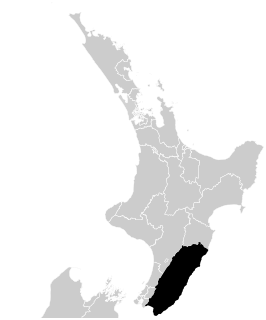Related Research Articles

The 1881 New Zealand general election was held on 8 and 9 December in the Māori and European electorates, respectively, to elect 95 MPs to the 8th session of the New Zealand Parliament.

Wairarapa is a New Zealand parliamentary electorate. It was first created in 1858 and existed until 1881. It was recreated in 1887 and has since existed continuously. In the early years, the electorate was for a time represented by two members. Wairarapa has been held by Kieran McAnulty since the 2020 election.
Taranaki was a New Zealand parliamentary electorate that existed for three periods between 1881 and 1996. It was represented by nine Members of Parliament.
Wellington South is a former New Zealand parliamentary electorate. It existed for two periods between 1881 and 1946. It was represented by seven Members of Parliament.
Wairarapa North is a former New Zealand parliamentary electorate, from 1881 to 1887.
Waitotara was a New Zealand parliamentary electorate in South Taranaki. It existed from 1881 to 1893, and again from 1978 to 1996. It was represented by four Members of Parliament.
Kumara was a parliamentary electorate in the West Coast region of New Zealand, from 1881 to 1890.
Thorndon is a former parliamentary electorate in the city of Wellington, New Zealand from 1881 to 1890.
Inangahua is a former parliamentary electorate in the Buller District, which is part of the West Coast region of New Zealand, from 1881 to 1896. The town of Inangahua Junction, which gave the electorate its name, was located in the adjacent Buller electorate until 1887.
Moeraki was a parliamentary electorate in the Otago region of New Zealand, from 1881 to 1887.
Geraldine was a former parliamentary electorate in the South Canterbury region of New Zealand that existed three times from 1875 to 1911. It was represented by six Members of Parliament.
Wakanui was a rural parliamentary electorate in the south Canterbury region of New Zealand, from 1881 to 1887.
Te Aro was a parliamentary electorate in Wellington, New Zealand from 1881 to 1890. It covered the southern area of the central business district. During the three parliamentary terms of its existence, the electorate was represented by three Members of Parliament.
Woodville was a parliamentary electorate in the Manawatū-Whanganui region of New Zealand from 1887 to 1890.
Lincoln was a parliamentary electorate in the Canterbury region of New Zealand from 1881 to 1890. It was represented by two Members of Parliament.
Auckland North was a parliamentary electorate in Auckland, New Zealand from 1881 to 1890.
Hokonui was a parliamentary electorate in the Southland region of New Zealand, from 1881 to 1890.
Dunedin East was a parliamentary electorate in the city of Dunedin in the Otago region of New Zealand from 1881 to 1890.
Oamaru was a parliamentary electorate in the Otago region of New Zealand, during three periods between 1866 and 1978.
The 8th New Zealand Parliament was a term of the New Zealand Parliament.
References
- McRobie, Alan (1989). Electoral Atlas of New Zealand. Wellington: GP Books. ISBN 0-477-01384-8.
- Wilson, James Oakley (1985) [First published in 1913]. New Zealand Parliamentary Record, 1840–1984 (4th ed.). Wellington: V.R. Ward, Govt. Printer. OCLC 154283103.